Why Community Belongs at the Center of Today’s Remote Work Strategies
September 23, 2020 13 Comments
At the top of most organizations’ priority lists right now is how to keep their workers productive and engaged. Except for in-person businesses and essential workers, the workforce has largely been physically disbanded until the pandemic comes to an end, one way or another. In unprecedented fashion, technology has suddenly become one of the single most important tools in moderating the effect of shuttered offices, physical distancing, and remote work from home.
However, most organizations have largely been paving the proverbial cowpath. Meaning that they’ve largely a) just turned up the volume on how often they use their existing meeting and collaboration tools such as Zoom, Slack, Teams, e-mail, and conference calls, and b) not really been able to think about new and better ways they could work together. Ones that inherently take real advantage of how people are now working in a much more distributed fashion.
From my experience in spending much of my life helping organizations better adopt and use technology to improve the workplace, I believe that the focus on using these tools was necessary. However, it is also woefully far from sufficient.
The Journey of Understanding To Get to the New Future Of Work
Simply put, the imperative today for getting remote work right is this:
To revitalize and thrive in our current global situation, organizations can and must do better in rethinking their near-term future state in terms of the digital art-of-the-possible.
Our workers need it, our customers deserve it, and the reality is that the future is already here, but unevenly distributed as Mr. Gibson famously noted. That means we know what many of those better ways of working actually are. But they are just foreign enough that they’ve largely stayed on the margins of many our workplaces so far. Yet as we’ll see below, within these new ways lies astronomical riches if we are prepared to act. Now most organizations are in the middle of being forced act. Described herein is what they can fully achieve, if they are to truly thrive in their current distributed state.
Related: The Playbook to Go About Rethinking a Post-2021 Workplace
The Most Important Discoveries in Digital Collaboration
In the 30+ years that we’ve all been digitally connected worldwide via the Internet, we have collectively made many profound discoveries about how people can come together through computer networks to create mass shared value. Since I find that this is still not as common knowledge as it should be, I’ve collected together the most significant insights about digital collaboration that we’ve acquired from the vast and infinitely innovative living laboratory that is the global Internet. Here they are in rough order of importance:
a) Digital networks can create value exponentially according to their size.
This has been known going as far back as Metcalfe’s Law. Networks have the potential to create enormous value for those using them. Yet the networks through which we collaborate today — whether digital or in life — generally underperform greatly and don’t come anywhere close to reaching their full potential. We don’t communicate and collaborate nearly as much as we can or should. We also over-communicate (think CC: fields in e-mail) and over-collaborate when we shouldn’t or don’t need to. There were some good reasons for this, in the past. But no longer.
b) Whenever we have removed the barriers to connecting and collaborating between people, much more value has been created.
Our lessons over the history of digital networks has been nothing short of revolutionary. Perhaps the most essential is that we have simply made it far too hard to connect, share, and collaborate with each other. Many examples exist: Not having access to the necessary networks, or the right conversations. Finding the right channels, the best apps, having the necessary permissions, being in the appropriate groups, teams, or project. Having access to experts, leaders, and far-flung colleagues, all in order to just get our work done. For management and control reasons, we’ve often made it too difficult or complicated to engage, which is surprisingly easy to do with technology (even one additional step to participate sharply reduces said participation says the research). We often make the process of collaboration take a great many steps (the early and profound lessons of Wikipedia should be required reading by anyone in charge of human collaboration at any level in an organization.)
Thus in our quest to design collaboration, to control it, to shape it, and direct it, to secure it, and make it safe, we also tend to kill it. Human collaboration is in reality a delicate and easily disturbed flower, an often unwieldy balancing act of human exchange between people who are often quite different themselves and work/think very differently from each other. So we must remove all possible barriers to helping them engage. And we must take great care not to add new barriers. It’s worth noting that this is why Twitter and LinkedIn work so well (they only have one main place to type), and it’s why e-mail (which only has two fields and can generally talk to anyone else on Earth who has a connection) has lasted so long while other technologies have fallen by the wayside.
c) The biggest barrier to human collaboration is inability to participate.
For the reasons cited above, we’ve learned that we must work assiduously to make it possible for as many people to participate in a given process as possible. Whether this is a team, project, initiative or vast corporate program, we have learned that we generally have rather poor foreknowledge on who the full range of stakeholders in the process actually is and who should be included. We then get them involved far too late in the process when we finally do learn who all those stakeholders are. To add insult to injury, we then we make it far too hard for them to engage with us, so historically they haven’t.
This insight is so important, so critical to the success of collaboration at any level, especially the virtual kind. It is because of these barriers that when I wrote Social Business By Design, I took great care to state that the fundamental principle of effective collaboration must be “anyone can participate.” I mean this literally: Unless there is a very good reason not to (and there usually isn’t), in order for you to begin to tap into anything close to the full potential of digital collaboration, you must open it up by default to any stakeholder who feels they have a stake in what’s being done. I realize that this can be hard, for many reasons (which is my point.) But it is very important, even critical, to seek to address.
d) Asynchronous collaboration at scale is the richest and most powerful model for working together that we know.
Throughout most of human history, we’ve collaborated in real-time, face-to-face. It’s great for small groups, but soon breaks down when more than a few people are involved. That’s largely because it stops everyone else from working (since only one person can communicate with the group at a time.) Asynchronous collaboration has existed since human writing has existed, but it’s long been a niche method because it couldn’t travel fast enough or scale well enough. With digital networks however, both of those obstacles completely fall away. Now everyone can communicate and collaborate instantly and at the same time without interrupting anyone, and there is no limit to how many people can collaborate this way.
The gift this insight gives us is remarkable. The fact that we don’t realize the immense power that this gives us to work with each other in a vast hive of parallel yet deeply connected flows of work is because it is still quite new. It’s just a decade and half old or so in real terms, compared to the other methods that have existed for thousands of years in some cases. Asynchronous collaboration has led to some of the most remarkable outcomes in fields such as open source software (now the dominant model for how software is created, no coincidence), pharmacology, hard sciences, social media such as YouTube (the most popular TV channel on Earth now, all asynchronously co-created by us), shared public information (see: Wikipedia and similar sites), crowdsourcing, and much more.
e) The collaborative model that taps most directly into these world-changing insights is the online community and enterprise social network.
All digital communication and collaboration is more efficient than the physical models that came before it, even if they don’t quite replace the human dimension of the in-person experience. Within digital communication and collaboration there is again an enormous variability in what scales and how many people can simultaneously contribute and create value.
Relentless experimentation by the millions of people using the Internet has consistently and repeatedly found certain models that enable much higher level of participation with much lower level of friction. They also delivered noticeably better results as an immediate consequence. Social media was a direct outcome of these experiments. It’s what worked best in large scale communication and within businesses, in collaboration as well, which became known as social business just a decade ago. Of all the forms of social media, it’s the online community and enterprise social network which best fits the bill for complex collaboration, inherently takes advantage of how digital networks create value, and for truly empowering knowledge workers in almost any given situation.
Open Collaboration is the Most Strategic Model
I’ll be very clear then as to the core lesson here: By default the single best model for digital communication and collaboration — and the one that produces the most human engagement and the richest outcomes — is the online community or enterprise social network. Nothing else compares in terms of openness, transparency, ability to enable wide participation, ensuring diversity, encouraging agile business methods, collecting and preserving knowledge, doing all this at any magnitude, and the list goes on.
In fact, a whole revolution in work has already taken place with these ideas and platforms, but has been more limited than many proponents would like. it’s just that we haven’t had the imperative like we do today, with almost entirely distributed workforces forced upon us. While many organizations have experimented with these new models, and not given them the time or resources to make them deliver their power and value, others certainly have over the years (see my social business success series for case studies.)
It Is Up To You To Deliver a Revolution in Better Digital Work
There are two visuals shown above that make a powerful case for a) the scale and sustainability of large-scale open collaboration and b) why community tends to be the better model for most work including projects, enterprise-wide initiatives, and a lot of teamwork. While chat tools like Slack do have value at the team level, they are absolutely not focused on or able to realize the full capabilities of our networks or our people as a whole. Collectively, wo actually do know today what the best digital models are for many types of work. Please realize that I’m not prescribing communities/ESNs for everything. But I am saying that we should make them the default choice today to unsilo our organizations and fully unleash our true potential as individuals and organizations.
In this time of vast disruption of business and life, when the ways of working that we’re used to have simply gone away, the answer is not to double down on the approaches of yesterday that were not designed for the highly distributed world of work today. We now know of much better, more human, more engaging, and more effective ways of working together. As leaders, we must now better connect and cultivate our workforce, customers, and partners as a top priority. That means we must deliberately and strategically cultivate these stakeholders as the communities that they really are and which actually power our organizations. We simply must work in these news ways in order to lead them into a much brighter and more successful future.
Additional Reading
There is a great deal of research and thinking that has gone into to understanding how the concepts above were discovered and can be situated successfully in most organizations. Here is a full reading list of what we know about social business (online communities and enterprise social networks — as well as other related tools/platforms like them — that can dramatically improve how people work together digitally):
Revisiting How to Cultivate Connected Organizations in an Age of Coronavirus
How Work Will Evolve in a Digital Post-Pandemic Society
What We Know About Making Enterprise Social Networks Successful Today
Revisiting How to Cultivate Connected Organizations in an Age of Coronavirus
My 2020 Predictions for the Future of Work
A Checklist for a Modern Core Digital Workplace and/or Intranet
Creating the Modern Digital Workplace and Employee Experience
The Challenging State of Employee Experience and Digital Workplace Today
The Most Vital Digital Management Skill: Network Leadership
More Evidence Online Community is Central to the Future of Work
Online communities learn new practices, report higher ROI
Can we achieve a better, more effective digital workplace?
How digital collaboration has evolved | ZDNet
The new digital workplace: How enterprises are preparing for the future of work | ZDNet

















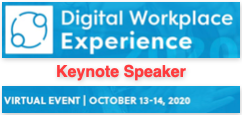









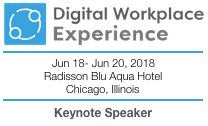



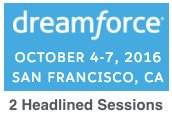




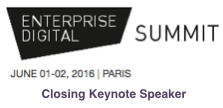








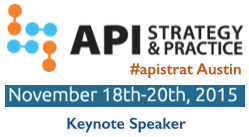
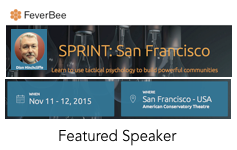

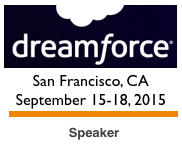

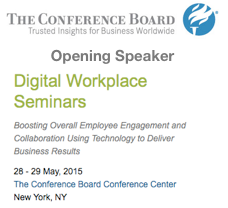




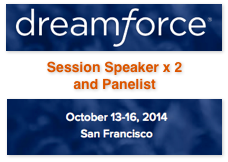





I really enjoyed this. I’m a curious person that gets bored easy if I don’t find something that catches my attention. I post comments always trying to help add value but never know if I’m welcome or not. Even if you never see my comments after reading this I’m happy I made them.
Thanks for stopping by, Satu. I try to reply to every comment here. That’s the whole point of social collaboration, after all. We get to meet people we never would have otherwise and share great ideas.
Hi Dion, thanks a bunch for the shout-out both in LinkedIn & Twitter. Another spectacular article on the many benefits behind online communities of practice and how ESNs are the key enablers for them to thrive. Alas, you would agree with me it’s not something new. In fact, back in 2011 (and many years before already!) I wrote an article (See https://bit.ly/2RShVdn) where I mentioned how online communities were the major ‘drivers’ of ‘adoption’ of ESNs within organisations and expanding beyond the firewall.
At the time I was referencing a fantastic presentation, that is still available, by the way, by the wonderful and always smart Rachel Happe (@rhappe) who was laying down the foundations behind having a rather robust and self-empowering online community building programme within an organisation to introduce a new way of working beyond just individual & team productivity: enterprise-wide, open knowledge sharing and collaboration through communities of practice.
And in the context of working distributedly, it just can’t get any better than communities of practice to support the social lenses I have already mentioned above, mostly because of three main reasons: pace, scale & complexity.
Your article reminds me of the work Harold Jarche has been doing all along around communities of practice as per https://jarche.com/2018/11/finding-community/ with one favourite quote I keep cherishing day in day out: ‘You know you are in a community of practice when it changes your practice’.
I do know that without the several communities of practice I’m an active member of over the years I wouldn’t have been able to working distributedly for the last 19 years and still going strong 😅👍
Yes, Rachel, Harold, and yourself were pioneers back then. I was on the scene myself teaching the official What is Enterprise 2.0 at the Enterprise 2.0 Conference back in the day, and helping large organizations roll out what was also called social computing.
It’s amazing what has changed, and what hasn’t. I was just advising a very large Fortune 20 company recently, who had just gotten the ESN religion in a big way, and wondering why now of all times? Enterprise tech is very strange as middle and late adopters (the majority) are often very late.
And I hope this means that everyone else will soon be coming along with community and enterprise social networks. I wrote the above to hopefully urge the process along a bit.
Thanks a lot for the follow-up response and for the lovely feedback, Dion. I very much appreciate it. The thing is that back then, i.e. over a decade ago, we weren’t really pioneers in the strict sense of the word. There were other folks who had been advocating and strong supporters of online communities. If I think of folks like Etienne Wenger, Nancy White, John Smith, etc. etc. they were already doing online facilitation and communities of practice while I first got involved with KM in 1997. In fact, it was through Nancy and Etienne that I first got involved with communities as new operating models within organisations and all of that was happening by the late 90s and early 00s. So it’s been long time coming, I suppose, this whole topic of online communities.
However, organisations, like you well said, work in mysterious ways and here we are, over 20 years later communities becoming a hot topic again. Becoming the new operating model behind ‘Communityship’ and with an ability to influence everything around us. And it’s super interesting most organisations are opening up to them now when they probably realise we work in much more complex environments than ever before. And this is an area where online communities flourish through the extended usage of ESNs, so I’m not surprise you continue to help organisations understand and embrace these new ways of working and interacting, because, frankly, they are not going away. They never have. They have always been there, it’s just that businesses are only now starting to take them seriously, because they know deep inside without them they would become obsolete pretty fast, as we are seeing, unfortunately, throughout these extraordinary times we are living through with the pandemic.
Fantastic post, Dion, as always. If anyone had told me back at those Enterprise 2.0 Conferences that you (we) would still need to be evangelizing these communities and platforms in 2020, I would never have believed them. (And I would have told Gartner to flatten and extend their Hype Cycle.
I also default to the benefits of collective intelligence and collaborative decision-making, as this has always seemed, in my mind, to result in more tangible and quantitative ROI (to convince the naysayers or the CFO of the long-term dividends).
Very nice (and not surprising) to see my old friend and colleague Luis Suarez commenting here. (Don’t be modest, @Luis, you were WAY ahead of the curve. I use the phase ‘working out loud’ to this day and you were a social media influencer before it was cool (and lucrative!) to be one.)
Thanks very much to you both for continuing to lead by example and spread the good word.
Oh, my! Hiya, Bob! Many thanks for the lovely comments and for dropping by to share those wonderful insights in Dion’s terrific blog post! All of a sudden I just had a bit of a flashback thinking about the good old times when we used to comment on people’s blogs, learn from others about the great insights they would be sharing across and build community along the way. Gosh, that seems like ages ago, and, yet, here we are again 😅👍
Some things just never get too old, right? What a real treat seeing your lovely feedback and to learn you’re doing well, my dear friend. It’s been a long time, and perhaps that’s *exactly* the point behind online communities. We may move on to do other things, other jobs, other careers, other lives, but eventually the community remains, (almost) intact, and ready to re-ignite those brilliant conversations we once had as if it was just … yesterday! 🙌😀🙌
Be well, my dear friend, and keep having fun, Bob! Look forward to speaking more with you soon! It’s very much overdue, don’t you think? 😅
Yes, Luis, I was just making that point to Ray Wang. So many human touchpoints have the potential to be improved by extending and enriching them with online community. Every conference, work event, corporate retreat, or civic activity is the seed for a community that can stay in touch over time. Which they’ll do as long as there is value in the digital gathering.
Communities of internet, practice, and purpose are the inevitable future of work. Not because I say so, but because most people will eventually discover them and realize that it’s truly the best default way to collaborate and engage. Now it’s time to help make it happen faster.
Hi Dion, RE: ‘Communities of interest, practice, and purpose are the inevitable future of work’. Well, I am afraid I am going to disagree with you, my dear friend. Communities (of Interest, Purpose or Practice) are not necessarily the future of work, but pretty much the present of work. COVID-19 has pretty much managed to put a nail in the coffin to that much hyped term and for a good reason.
If you look into it, and throughout this pandemic, we have been able to confirm how some of the more robust organisations that are adapting to these brave new working conditions of distributed work through digital tools have been able to do it because they already had an existing online community building programme that’s been running for a while. Perhaps what was missing till today was just scale.
I am not too sure about pace though, since we all know those communities run on a completely different pace than individuals or teams do. They are much slower, more intentional and purposeful, and focusing a whole lot more on the long term than anything else. And that’s what makes them not only special, but essential and rather critical to every business.
But I do realise I am preaching to the choir here. The toothpaste is out of the tube and it’s going to be almost impossible to put it back in and rightly so! 😉
Dion – Rediscovering your writing after several years. (It is also great to see Luis here). Yes, Communities are making a come back. I like how you discuss the importance of leadership using communities as a way to connect with and collaborate with their employees. Unfortunately, I see many companies defaulting to the usage of Slack to (try to) establish that network effect and to have extensive dialogues. It would be great if you could work your magic and write something looking at the differences between Slack and Online Communities or ESNs. Thanks again for your great piece. Keep on writing! – Scott Wilder – currently at HubSpot
Hiya, Scott! Great to see you over here dropping by adding that wonderful reflection! I couldn’t have agreed more with you that distinction is very much needed because far too often we keep seeing how those messaging and chatting apps get mixed with ESNs (as in replacing them 😢) when we are fundamentally talking about two completely different beasts.
Messaging & Chatting Apps usually default to close / private while ESNs default to open. That’s pretty much the main key difference I keep telling folks about. I think Dion has already been writing about this in the past. I’m not too sure whether it was here in his blog or at ZDNet, so I will leave it up to him to share some of the writings he’s done in the past on this topic.
Pingback: Friday Finds: The Best of Learning, Design & Technology | October 2, 2020 – Mike Taylor
Reblogged this on MidMarket Place.